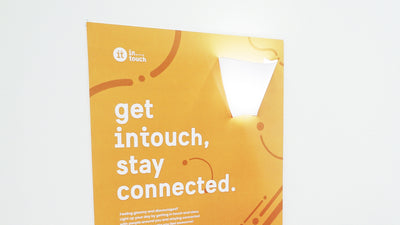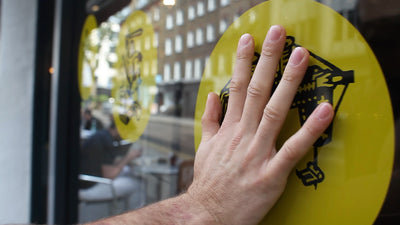TWO SIDES - Wearable Technology Using Electric Paint

Fashion designer, Louise Binder created an interactive experience combining technology and fashion for her participation at the graduate show using Electric Paint.
Her final collection ‘TWO SIDES’ expresses experience-driven design, focusing on emotions and feelings through wearable technology. The garments use a mood-based approach and explore the reflection of light, colours and play with the perception of the wearer and viewer.
Mental health has become a huge issue in the world, by 2020 depression will be the second leading cause of world disability. It is important to approach this field from a design perspective, finding solutions through questioning how wearable tech can positively transform emotions and stimulate the senses to enhance well-being.
Working with integrated lights that are activated through touch surfaces and react towards the mood state pushes the boundaries of clothing and electronics.

The concept aims to improve people’s lives and happiness by concentrating on the consumer’s needs and how they want to feel. Creating a positive experience for the wearer with a focus on comfort is the leading vision. The future is feeling and can be easier with wearable gadgets.
Louise used Electric Paint in combination with El Wires which are integrated into two hoodie styles and can be activated through touch. The paint sensor is hidden on one side only under reflective trims. For the men’s style, it’s on the sleeves, whilst for the women’s style, it’s in the front.
Finding the right components to apply the paint was challenging because Electric Paint is water-based and it cracked on different materials. It worked best on woven surfaces such as jersey or cord/ribbon trims.
For integrating lights and electronic components, the designer worked with Mouhannad Al-Sayegh, an Engineer at the Digital Learning Lab LCF, London. Programming the prototype worked in the tests, switching the el wires on and off with no problem. The touch sensors, which were also connected to the prototype worked great.
The team had some difficulties in the final prototype stage as the lights switched on through the touch but could not switch off again, only manually at the flora board. In the end, they managed to solve this problem by programming the code differently.
For the final products, Louise also used the conductive thread in combination with the paint to ensure it would work well, even if there were small cracks on the wearable products.
Louise says that working with smart technology as the conductive paint was a great experience and it creates lots of opportunities for the future of technology and electronics in fashion. She believes that soon, people will be more aware of approaching mental health and well-being from a new perspective and start using tech gadgets in fashion, tracking and monitoring sleep patterns, health and fitness issues and more.
Images: Damon Kaza
If you’d like to see your project on our blog, email us at: info@bareconductive.com
Don’t forget to share your projects and project photos with us on Twitter and Instagram using #BareConductive.







